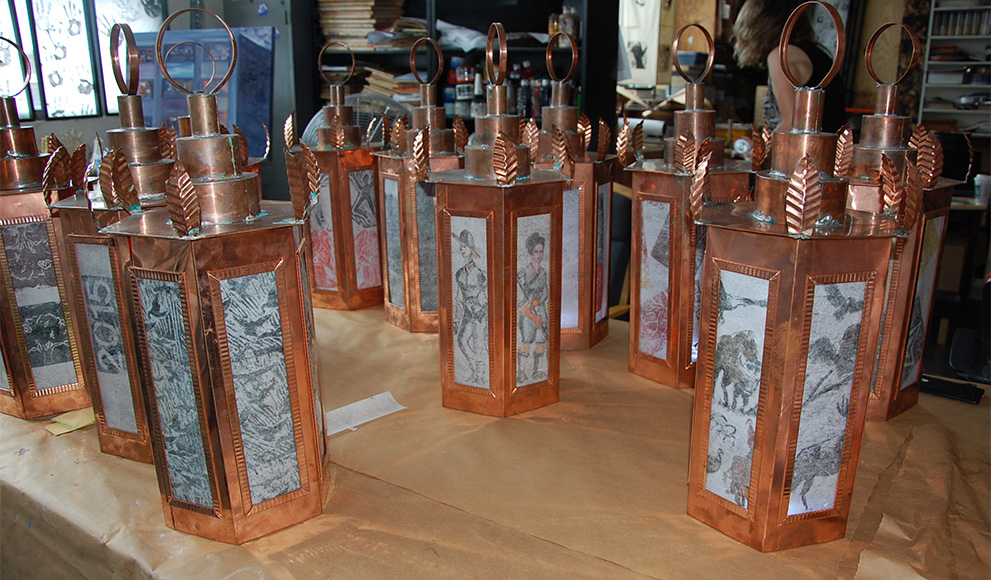108 Copper Lanterns Commemorate The Liberty Tree In The First of A Series of Events Co-Created By Wellesley’s Martha McNamara

On August 14, 1765, thousands of Bostonians gathered beneath an enormous elm tree not far from Boston Common to protest the hated Stamp Act, a tax levied against the people of Massachusetts without their consent. The protest convinced the official charged with administering the tax to resign his office, and the tree where the protest had begun received a new name: the Liberty Tree. On Friday, August 14, 2015, the site will again serve as a celebration of Liberty.
Martha McNamara, director of the New England Art & Architecture Program at Wellesley, is one of the cofounders of Revolution 250, which is a growing consortium of organizations in the city of Boston who have come together to celebrate, commemorate, and interpret the 250th anniversary of the events culminating in the American Revolution.
McNamara, who with David Olsen, assistant professor of art, and students, spearheaded a project several years ago called Mapping Revolutionary Boston, said she has “long felt that we could do a better job of creating a more coherent narrative about the American Revolution."
Together with Martin Blatt of the Public History Program at Northeastern and Robert J. Allison of the History Department at Suffolk, McNamara is helping to design a series of events that recognize significant actions taken by Bostonians in the decade leading up to the start of the Revolutionary War, beginning with the August 14 Liberty Tree celebration.
"We felt that this was an opportunity to showcase Boston’s role in the American Revolution," McNamara said, adding that when most people think of early revolutionary action they tend to think of another city. "Philadelphia has done a better job of laying claim to history of the Revolution, but all the political protest, action, thinking, and political change happened here in Boston. As one of my colleagues has said, 'it was Boston that did all the work; Philadelphia just filed the paperwork.'"
Through the August 14 event, Revolution 250 and the City of Boston will commemorate the 250th anniversary of the Liberty Tree and its meaning by illuminating the plaza surrounding the place where the Liberty Tree once stood with 108 lanterns modeled on those that hung in the tree in 1765. The number, 108, was a nod to each of the British parliamentarians who voted against the Stamp Act.
Artist Michael Dowling of Medicine Wheel Productions conceived the public art event, which starts Friday at 8 PM. Digital projections of images and quotes from the Revolutionary era and today will be projected onto the buildings surrounding the site. The handcrafted copper lanterns, stamped with images carved by members of five community groups (Ostiguy High School; Boston Asian: Youth Essential Service; St. Francis House; South Boston en Acción, and the Museum of African American History) and historians from various sites in Boston, will be carried by these groups into the plaza. Afterward, the lanterns will be stored to be used in future events, including commemorations of the Boston Massacre in the year 2020 and the Boston Tea Party in 2023.
McNamara said she is excited about having brought people together to work on this project that really emphasizes the role of ordinary Bostonians in political change. "We hear about John Adams and John Hancock, but it wasn’t just powerful people who created change," McNamara said. "For me, what's so exciting about this suite of anniversaries is that it really was ordinary people going out into the streets and advocating for change—something that should resonate with people today."
The Revolution 250 project is made possible with support from the Boston National Historical Park, Eastern National, and is supported in part by a grant from the Boston Cultural Council, a local agency funded by the Massachusetts Cultural Council, administrated by the Mayor’s Office of Arts and Culture.
